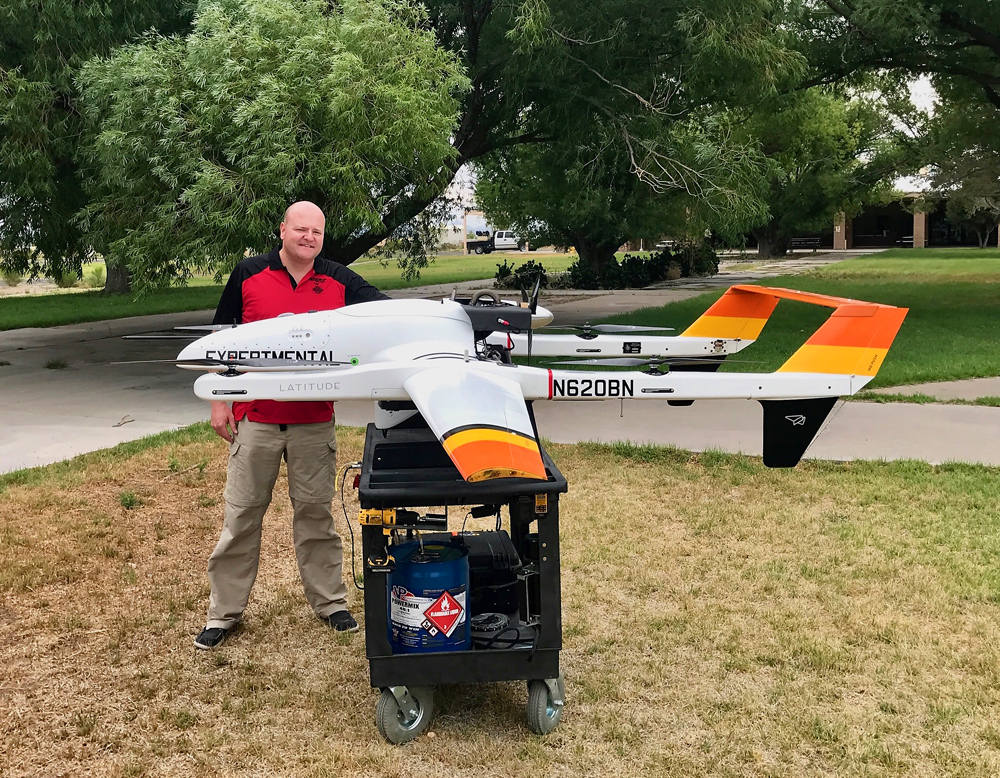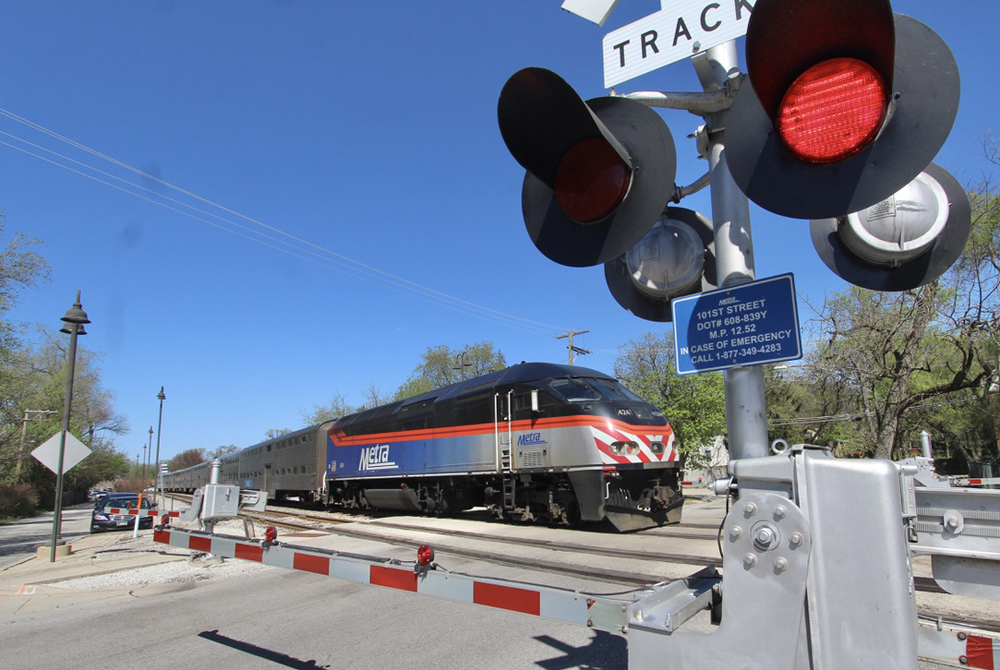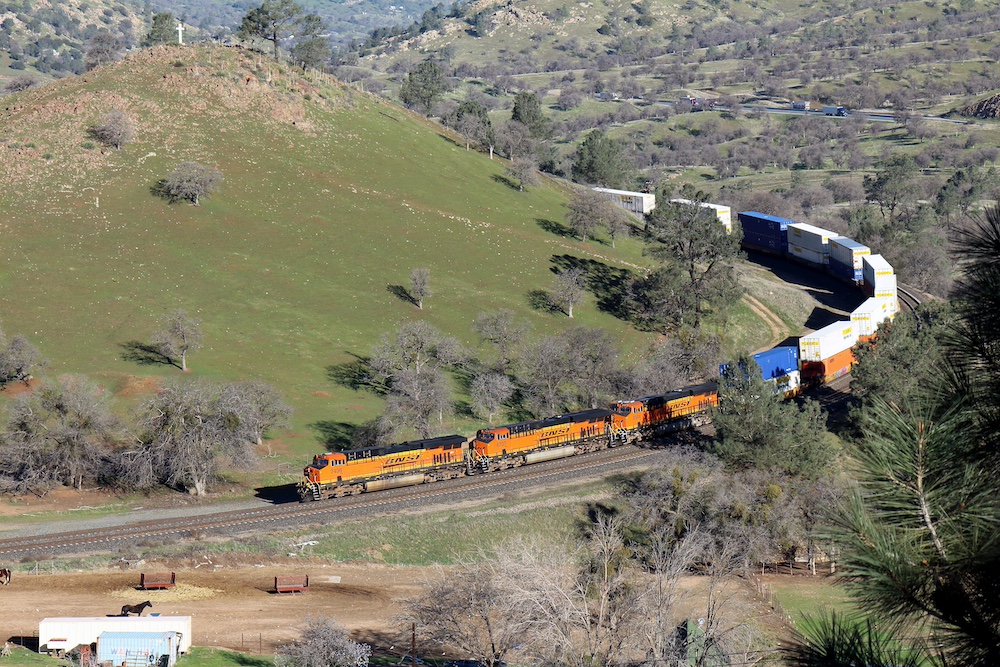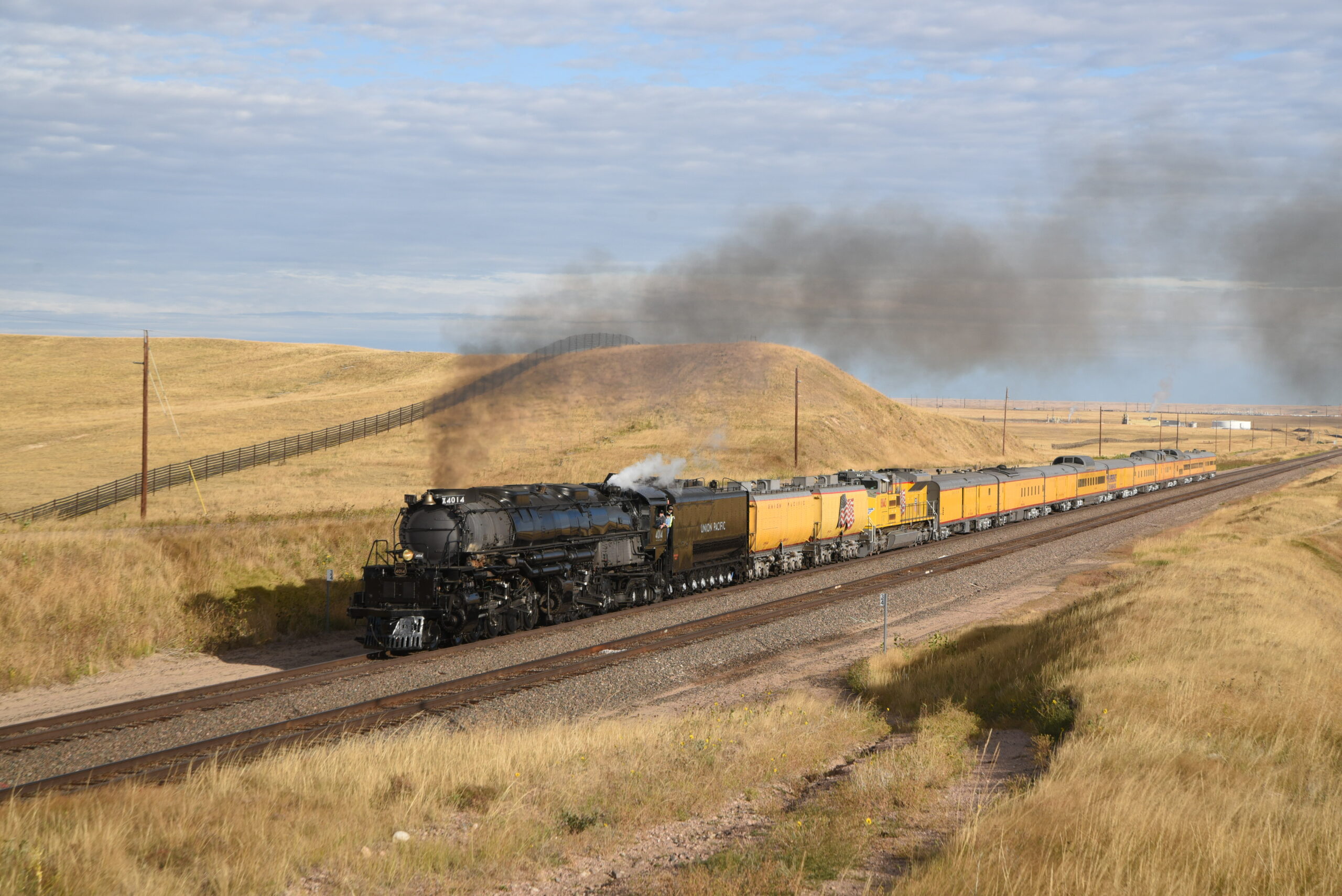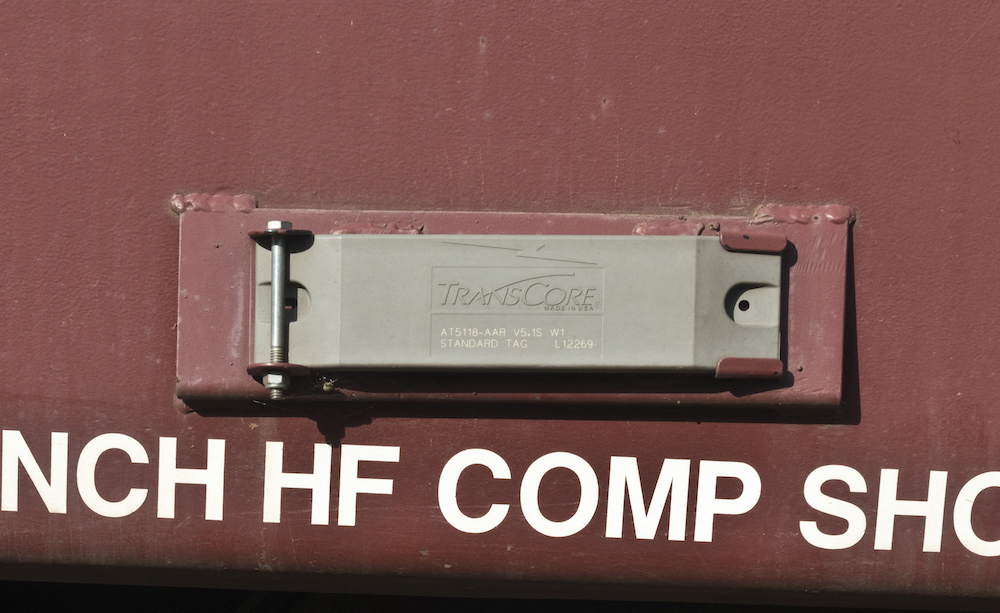
AEI data tags and readers enable rail cars to be tracked as they move across the North American rail system. The AEI (Automatic Equipment Identification) system consists of passive tags mounted on each side of rolling stock and active trackside readers. The system uses radio frequency and replaces an unsuccessful older optically-based car tracking system that was introduced in the late 1960s called Automatic Car Identification, or ACI for short. This system was supposed to allow railroads, car owners, and shippers to track anything moving by rail. Lineside scanners would read colored bar codes on the sides of the cars and pass the information about a particular car’s whereabouts to a central computer.
The problem? Dirt!
When the ACI tags were clean, everything worked fine. However, keeping something clean on a railroad is next to impossible, and a moving train couldn’t stop and repeatedly rescan its cars until they were read like a supermarket checkout clerk can do with a dirty cereal box label. The ACI system was abandoned in the late 1970s and the tags were removed as equipment went in for shopping and repainting, although the labels can still be found on many cars.
This left the railroads without an automated way to keep track of equipment, so car tracking once again required eyesight, waybills, and sharp pencils.
Then, in the early 1990s, something new came along that allowed railroads to retire their pencils and automate the way they keep tabs on rolling stock. It’s called the Automatic Equipment Identification, or AEI, data tag.
The Association of American Railroads (AAR) has required all cars and locomotives to have data tags mounted on their sides since the end of 1994.
How it works
The data tags — essentially computer circuits in plastic boxes measuring roughly 3 by 10 inches in size — are mounted to the left of both sides of the rolling stock about 48 inches above the rail. Often they’re attached to a piece of metal angle or a bracket to improve their reception and transmission.
AEI data tags are radio transponders that broadcast a locomotive, freight car, trailer, container, or end-of-train device’s information to trackside readers while the train rolls by. Each tag has information formatted for the particular piece of equipment it’s attached to, and usually includes the equipment type, owner, and road number.
To virtually eliminate maintenance, there aren’t any batteries in the data tags. The trackside readers retrieve data-tag information by using a radio signal to reflect and modulate the information back to the reader. Basically, instead of using the visible light that a checkout scanner uses, the trackside readers use a radio signal.
Data tags can be very visible on railroad equipment if left in their unpainted, gray plastic color. New cars and locomotives might have painted tags, but those are rare; most are left in the color they’re molded in.
AEI readers are also easy to spot. Most look like white plastic boxes mounted on triangular stands. Often you’ll find the reader used in conjunction with a dragging-equipment detector or a wayside video camera station. There are about 1,200 trackside readers throughout North America.
Why they’re needed
The information gathered by the readers can be used by the railroad’s traffic or customer service department to locate a shipment for a customer at almost any point of its journey. It also helps out in waybill generation by eliminating the information entry errors normally associated with manual reporting.
Data-tag readers are also usually tied into a railroad’s car location message (CLM) system. It’s up to the railroads to share the information between their CLM systems so customers can track multiple-railroad shipments. The data-tag standard has nothing to do with how the information is used; it just standardizes the reporting method.
Standards for the AEI system were developed with the trucking and maritime industries, so intermodal equipment can be reported as well. Trucking firms J. B. Hunt and Schneider International also have data tags mounted on some of their tractors.
Almost all North American railroad equipment – freight and passenger – now has AEI data tags, and railroads are happy with the results. The AAR says over 1.2 million cars and 22,000 locomotives have been tagged.
The AEI data tag project, like any mass implementation of new technology, has not been without problems. In March 1992, Santa Fe ran into some problems with its data tags. Cars tagged at Argentine Yard in Kansas City, Kans., were arriving at the railroad’s Barstow Yard in California with essentially blank tags – the readers couldn’t read them. The culprit was an airport in Texas with a ground radar that was stronger than was expected by the original AEI specifications. The FAA later replaced the airport’s antiquated radar with a new, low-power installation. Newer data tags are also supposed to be more resistant to high electro-magnetic pulses and should not experience this problem again.
Several firms manufacture AEI data tags and readers, but Amtech, the company chiefly involved in developing the system, is the largest supplier of data tag equipment.
Amtech also markets data tags that can transmit information about a piece of equipment’s well-being. These dynamic data tags are called Automatic Equipment Management, or AEM data tags by Amtech. Externally they look the same as their AEI cousins, but they also have a wire coming out the bottom that hooks up to onboard computers. Dynamic data tags can transmit information to the readers about how much fuel a mechanical refrigeration car unit has left, how a locomotive is running, or if the shock control on a car is functioning properly.






